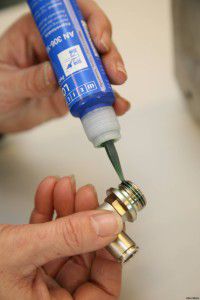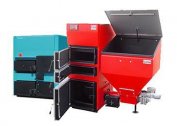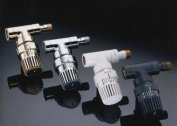Ideally mounted heating systems do not exist, and therefore, sooner or later it is discovered that the coolant is leaking. Sealants for heating systems can eliminate leaks. The polymeric substances included in their composition are suitable for filling gaps in pipe joints, radiators and even boilers. We suggest considering the advantages of liquid sealant for heating in comparison with conventional sealing means, as well as the rules for its use.
Types of sealants
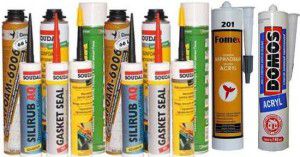
In today's life, a large number of means with sealing properties are used.
According to their chemical composition, sealants are divided into the following main types:
- acrylic - unstable, do not tolerate temperature extremes;
- polyurethane - are elastic, have high adhesion to metals, are resistant to corrosion and temperature;
- silicone - the most common type of universal sealants, retain elasticity and moisture resistance in a wide temperature range, are durable.
When sealing leaks in the metal elements of the heating system with silicone sealant, it is permissible to use only its neutral variety, but not acidic, since the acetic acid contained in the acidic sealant will cause active corrosion of the metal.
Heat-resistant sealant for heating pipes is used in relation to metal and polymeric materials. This tool regularly fulfills its purpose - to prevent the penetration of moisture from damaged elements of the heating system. The sealing substance, which is a viscous mass, hardens quickly enough at the place of application and subsequently withstands high temperatures.
To seal threaded joints in modern heating networks, anaerobic adhesive sealant is used instead of linen tow and FUM tape. The environmental safety of such a sealing agent allows its use not only in heating, but also in plumbing systems.
Sealant for heating boilers serves to eliminate gaps in places where a heat resistance of material up to 1500 ° C is required.
Using this tool it is possible to close cracks in heat exchangers and chimneys of boilers and furnaces. After solidification in the seams between surfaces of different materials (metal, brick, concrete), the substance remains leakproof.
The better liquid sealant for heating repair
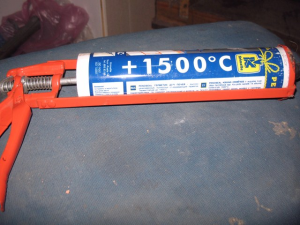
For repair of heating, it is not always possible to use external means. What to do, for example, if the leakage site cannot be detected, because the house had hidden pipes and installed a heated floor? Do you really have to break walls and open floors? No, you don’t have to! In such situations, a relatively new method of eliminating leaks is used - by pouring liquid sealant for heating pipes into the system. Such a sealant is also suitable for radiators when it is not possible to lay the clamp on a leak.
The main difference between liquid sealants for a heating system is their ability to eliminate leakage not by applying to a damaged place from the outside, but directly from the inside.
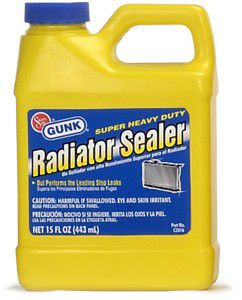
The essence of this method is that in the mixture with the coolant the sealant remains liquid, and only when it comes into contact with the air entering the system does it polymerize. Gradually hardening, the seals of the sealant are glued from the inside of the gap precisely in those places where the integrity of the system is broken.
Several types of liquid sealants for heating are produced, each of which is adapted to special conditions of use, in particular:
- the coolant is water or antifreeze;
- gas or solid fuel boiler;
- heating or water pipes.
Do not try to look for one single universal sealant for a home heating system. It is better to purchase a specialized composition for the specific parameters of your heating system.
The best known among consumers are liquid sealants for heating systems, manufactured by the German company BCG. The use of these products is considered an ideal solution for eliminating latent coolant leaks. When used correctly, the liquid sealant is not dangerous for heating boilers and does not harm the circulation pump and measuring instruments.
Sealant for pipes and radiators must remain in the system for a long time. Once you add this sealant to the heating system, you can forget about leaks for several years.
Sealants for closed heating systems eliminate pressure losses associated only with leaks in pipes and batteries, but are powerless in cases where the membrane in the expansion tank is broken.
Liquid Sealant Leaks
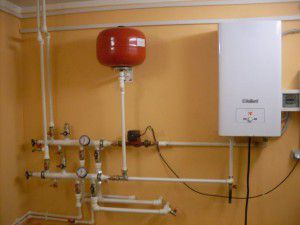
The procedure for using liquid sealants to repair a home heating system may seem rather complicated. In some cases, clots of the sealing fluid cause partial blockage and impede the movement of the coolant. Therefore, in order not to harm the heating equipment due to its inexperience, it is better to invite a specialist. In any case, you need to study the instructions for the use of a specific type of sealant for radiators and strictly follow it.
Having decided to use liquid sealant to eliminate a problem in the heating system, you must make sure that:
- the cause of the pressure drop is precisely the leakage of the coolant, and is not associated with a malfunction of the expansion tank;
- the selected type of sealant for heating systems corresponds to the type of coolant in this system;
- Sealant is suitable for this heating boiler.
When using liquid sealant for pipes and radiators, it is important to maintain the correct concentration. On average, its values range from 1:50 to 1: 100, but it is desirable to determine the concentration more accurately, since factors such as:
- coolant leak rate (up to 30 liters per day or more);
- total volume of water in this heating system.
If the volume does not exceed 80 liters, 1 liter of sealant will be sufficient for pouring into the heating system. But how to more accurately calculate the volume of water in the system? You need to calculate how many meters of pipes and what diameter was laid in the house, and then enter this data into any of the online calculators. To the obtained volume of pipelines it is necessary to add the passport characteristics of the volumes of all radiators and the boiler.
You can drain all the water from the system into a certain tank, the volume of which is precisely known, and then fill the system again.
Heating system preparation
- To dismantle or cut off all filters with taps so that they do not clog with a viscous sealant solution for heating systems;
- Unscrew the Mayevsky tap from one radiator (the first in the direction of the coolant) and connect a pump to it (type "Kid");
- Start the heating system and let it warm up to 50–60 ° С for an hour at a pressure of at least 1 bar;
- Open all valves on pipelines and radiators for free passage of sealant through them;
- Remove air from the entire system, including radiators and the circulation pump.
If you do not completely vent the air, it will begin to react with the sealant and provoke its thickening at all in places where it is necessary to eliminate the leak.
Sealant preparation
-
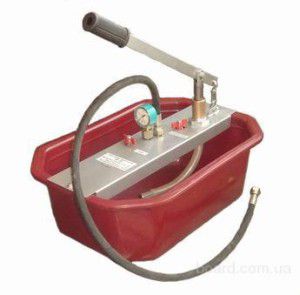 Pouring liquid sealant into the heating system is possible, including using a manual pump for crimping
Pouring liquid sealant into the heating system is possible, including using a manual pump for crimpingDrain about 10 liters of hot water from the system into a large bucket, of which most of it should be used to prepare a sealant solution, and leave a few liters for subsequent washing of the pump;
- Shake the canister (bottle) with sealant for radiators and heating pipes, then pour its contents into a bucket;
- Rinse the canister thoroughly with hot water so that all the sediment remaining in it falls into the prepared solution.
Sealant solutions for heating systems must be prepared immediately before use so that the liquid does not come into contact with atmospheric air for too long.
Sealant Fill
The liquid sealant for heating systems must have time to mix with the coolant before it reaches the boiler, so it is more advisable to fill it into the supply:
- Introduce a solution of liquid sealant into the system using a pump;
- Pump the remaining hot water through the pump so that absolutely all the sealant residue gets into the system;
- Release air from the system again;
- Raise the pressure to 1.2–1.5 bar and maintain the operating cycle of the system for 7–8 hours with a temperature of 45–60 ° С. This period is necessary for the complete dissolution of the sealant in the coolant.
The operation of heating equipment cannot be stopped for several days until the polymerization of the liquid sealant for heating is complete.
How does the sealing effect work?
The leak should not be expected immediately, but only on the 3rd or 4th day. During this time, the sealant for the heating pipes will condense and close the gaps in the problem areas from the inside. The elimination of the problem of coolant leakage will be manifested in the fact that the sound of falling drops of liquid will no longer be heard in the house, the moistened places on the floor will dry out, and the pressure in the system will cease to decrease.
At the same time, one of the negative effects may be a slight blockage of passages in devices for distributing the flow of coolant, as well as in thermostats. But this problem can be easily solved by periodically opening and then adjusting such regulators to the right position to prevent their further sticking.
When working with liquid sealant for heating systems, the same strict safety precautions that are prescribed for working with all kinds of chemicals must be observed!
The video lesson will help you understand how to independently eliminate a leak in the heating system using liquid sealant.
Based on the foregoing, we can make sure that the liquid sealant is undoubtedly worth it to apply it to eliminate leaks in the heating system. Even though its price is “biting”. However, it should be understood that the hidden installation of heating pipes is not only convenience, but also a certain risk, for which sometimes you have to pay.
